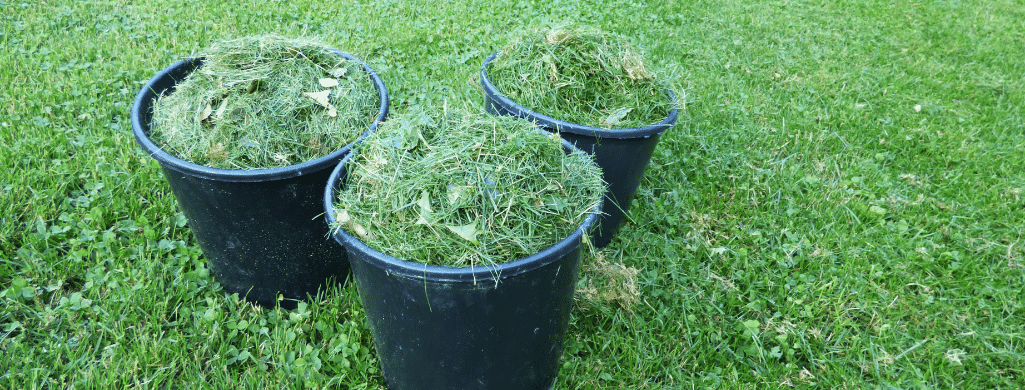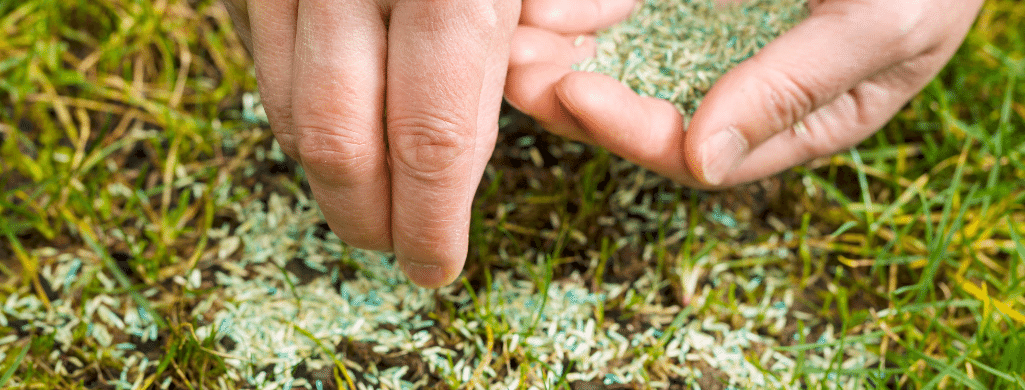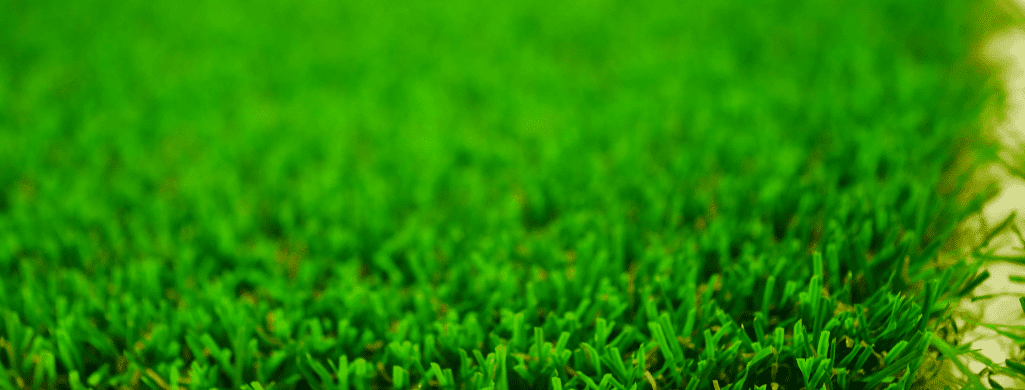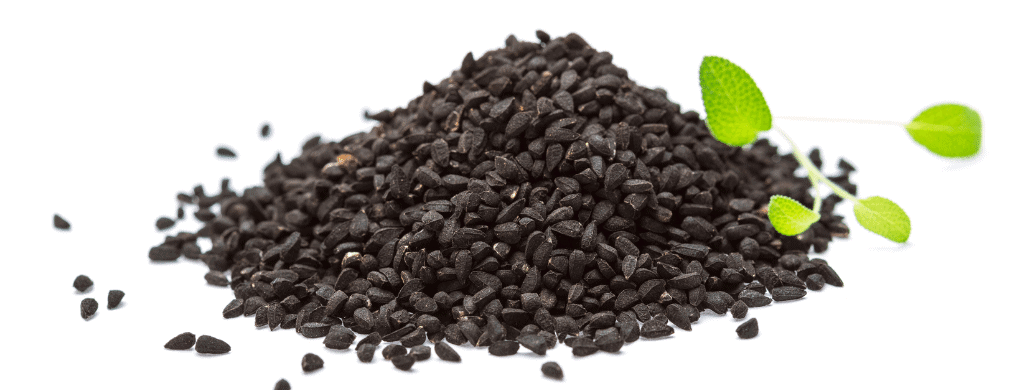When you cover grass seed, heat and moisture are locked in to aid germination. You also keep water, wind, and animals from stealing your precious seed.
Covering grass seed is an important part of growing a lush lawn, but it can become costly to buy mulching materials.
Have you ever considered using grass clippings to cover your grass seed?
Although it seems odd to cover up grass seed with grass clippings, this is an eco-friendly, moisture, and weed barrier. It improves soil quality and is readily available. Grass clippings are easy to apply to the seed; just don’t lay too thick of a layer. They will naturally fertilize and promote growth.
Read on to find out the benefits of applying lawn clippings as a mulch for your grass seed.

Table of Contents
Do Grass Clippings Help Grass Seed Grow?
Adding grass clippings to your seed will aid its growth. Clippings provide seed-to-soil contact, which encourages germination.
When the grass clippings decay, the nitrogen, water, and other essential nutrients inside them break down and nourish the seeds. This promotes growth, like a natural fertilizer.
Besides providing essential nutrients, grass clippings also have many other benefits.
Budget-friendly
The number one benefit of grass clippings is how cost-effective they are. There are no trips to the lawn and garden center to buy costly materials to cover your seed.
Everything you need is usually on-hand at your home.
Straw is the most commonly used grass seed covering, but it costs around $250 to seed and straw a 1,000’ square foot lawn with larger yards getting into the thousands.
This could become costly for larger yards.
Grass clippings cost little to nothing as an alternative to straw. You usually have an abundance or can readily find grass clippings, so you won’t have to worry about running out.
Not only do clippings help you save on mulching materials, but you also won’t need to buy excess herbicides and fertilizers.
The grass does most of the work of keeping out weeds and providing nourishment to the seeds
So, with grass clippings, cover and nourish your seed for the cost of putting fuel in your gas mower.
Eco-friendly
Reusing your grass clippings is not only a budget-friendly option but also eco-friendly.
Grass clippings are compostable, which breaks down naturally and returns nutrients to the soil.
They are also an organic material, so you won’t have to worry about the environmental impact.
Your clippings will be chemical-free if you don’t have a herbicide-treated lawn.
People douse their lawns with expensive fertilizers and herbicides every year, which can wind up in the local water run-off.
If you recycle your grass clippings, you’re saving on the cost of those fertilizers and keeping those chemicals out of your lawn.
Reduce your plastic usage by applying your lawn clippings directly to your seed and skipping the bags.
Chemical-free lawns attract bees and beneficial wildlife; using the lawn clippings will get those piles of grass off your lawn and nourish your grass seed.
It is a win all around.

Moisture Control
One major problem homeowners come across is letting their seeds dry out.
Mulching your grass seed with clippings will retain moisture and prevent you from using excess water on your lawn. So, if you forget to water one day, it won’t be as big of a deal.
Yet, moisture is a key part of growing grass seeds. You don’t want too much or too little.
It may be a hassle to bring the hose out to a bald spot in the yard each day or to set up an irrigation system.
However, you must keep your new grass seed moist, even if you have mulched it. Sunny, hot days will still dry it out.
If your seeds do not have water, they will not sprout.
Straw is another viable option, though some lawn enthusiasts argue it’s not as good.
Read more in our grass clippings vs. straw article.
Weed Barrier
Grass seedlings constantly battle weed growth. But, a good mulch, such as grass clippings, can provide a weed barrier.
The clippings help block sunlight from pesky weeds but don’t worry, as long as you don’t spread it too thick, it won’t hurt your seedlings.
Not having to compete for resources allows your grass plants a chance to work on root development.
You want your grass seedlings to establish deep roots to be long-lasting and healthy looking.
You won’t have to worry about using a weed killer to get rid of pesky weed shoots with this type of mulch, which keeps harmful chemicals out of your lawn.
Check out more details about using grass clippings as a weed killer.
Improves Soil
Lawns with heavy clay soil will benefit from grass clippings. As the clippings break down, they provide organic matter and soil aeration.
The aeration will open pockets of loose soil where the grass roots can stretch out and develop.
This is particularly essential for high-traffic areas. These areas become compacted due to the constant pressure of walking over the ground.
The breakdown of the dead grass clippings also acts as a soil amendment. Grass naturally contains nitrogen which is released during the natural decaying process.
This will promote a healthy lawn.
You will save money on fertilizer because the clippings will supply valuable nutrients to the soil.

Where Can You Get Grass Clippings to Cover Grass Seed?
One of the most exciting things about using grass clippings is how readily available they usually are.
If you are spot-treating some bald patches in your lawn, simply use the clippings from your regular mowing and lawn care.
You will achieve the best results by using a push mower with a sharp blade.
This will ensure the grass is cut evenly. Usually, a typical lawn will produce loads of grass clippings.
If you have a large lawn and don’t want to rake tediously, there are lawn sweepers to attach to your riding mower. These will collect the clippings from your entire lawn.
I like using this lawn sweeper found on Amazon because it’s easy to use and affordable.
However, you may be short on clippings if you are completely seeding a new lawn. Ask your neighbors for their grass clippings.
Most people will gladly give them over.
You may have to rake them yourself, but the benefits of grass clippings outweigh the short-term work.
Apply Grass Clippings to Grass Seed For Best Growth
Before applying your grass clippings, let them dry out for around a day. Wet, green clippings prevent water and oxygen from getting to the seed.
This may also lead to a bad smell.
After they have been mowed, keep your clippings in a large wheelbarrow or on a tarp to apply the next day. Or, leave your clippings on the lawn to dry.
Then, come out the next day, and use a leaf rake to collect them. Then, transport them to your growing area.
Apply a light layer of grass clippings to the top of your seed. Aim for about a quarter-inch of grass clippings for optimal growth.
The layer should be spread evenly. Grass too thick in one area or another will promote uneven growth.
Using about 1-2” inches of grass clippings may be too thick and smother the grass seed, preventing air flow and promoting fungal growth.
Thick clipping coverage may also lead to additional bald spots in the lawn, and it can smother your grass seed.
Also, if you have recently treated your lawn with herbicides, you will not want to use those clippings. The herbicide may keep your grass from growing.

Should the Grass Seed or the Grass Clippings Go Down First?
Grass seed needs soil contact. So, apply your grass seed to the soil directly.
Soil preparation is a key part of seeding your lawn.
Begin by testing your soil’s pH level. It should be in the range of 6.2 – 7.0. If your lawn is too acidic or alkaline, you must add amendments before planting your seed.
To apply grass seed, you will do the following:
- Remove all debris, weeds, or existing grass.
- Till compacted soil and add any additional soil to low spots.
- Use a hard rake to smooth everything out.
- Place down the seed by hand or with a grass seeder.
- Then, mulch the area with a thin layer of dried grass clippings.
- Apply water to the area.
If you apply the grass clippings first, you are not going to get the same benefits of heat and water retention.
Are There Downsides to Using Grass Clippings as Mulch?
People with seasonal allergies may suffer more attacks if they use grass clippings to mulch their seeds.
Some people are allergic to grass. Their immune system attacks the grass pollen and causes many symptoms, such as sneezing, coughing, and skin irritation.
Mowing the lawn stirs up the pollen. Then, as you collect and spread the grass, you will continue to get grass pollen everywhere.
This can trigger asthma attacks and allergy symptoms in sufferers.
So, if you or another family member in the house has a grass pollen allergy, grass clippings may not be the best mulching option for you.